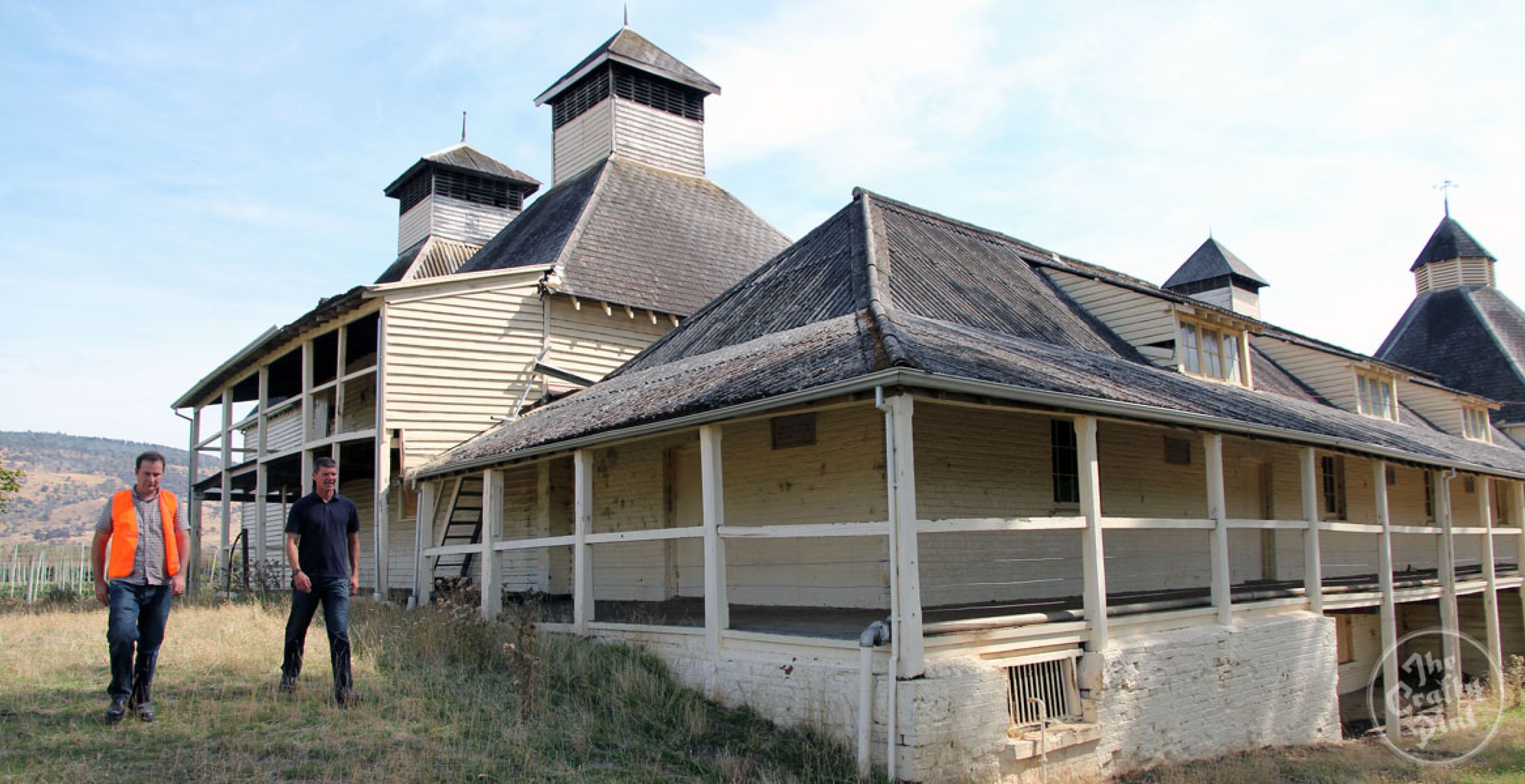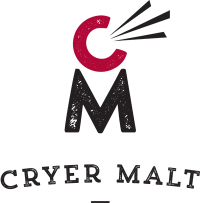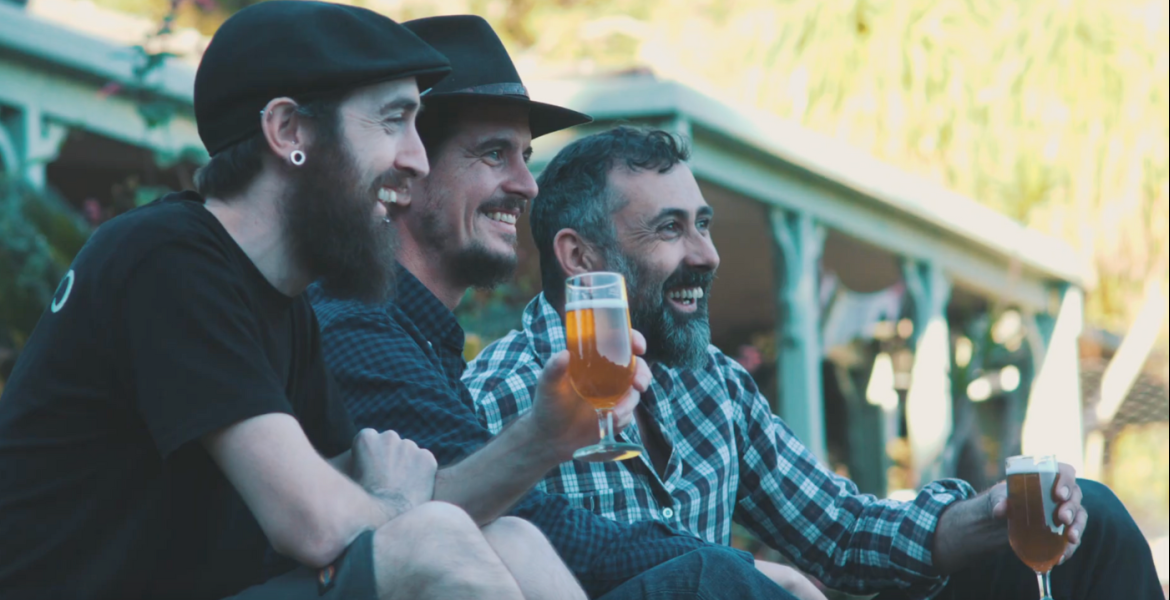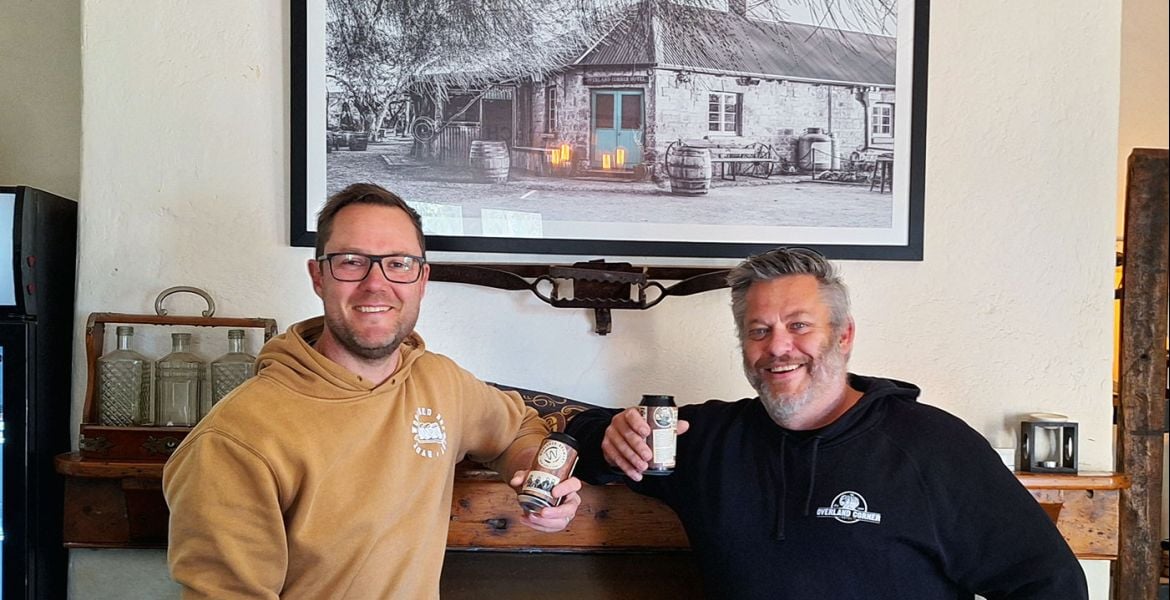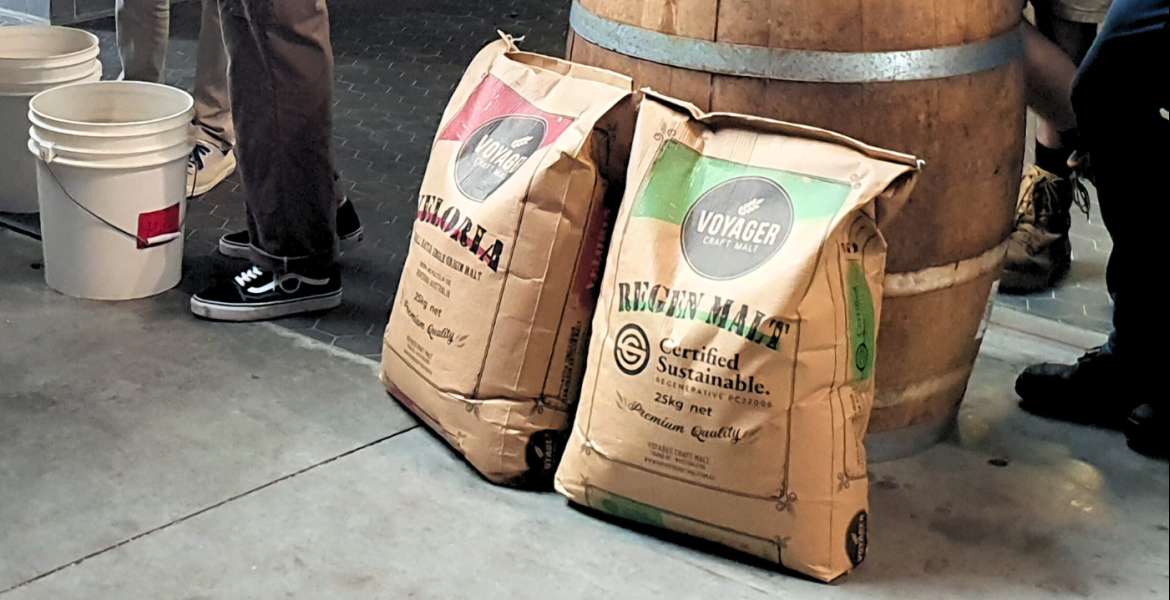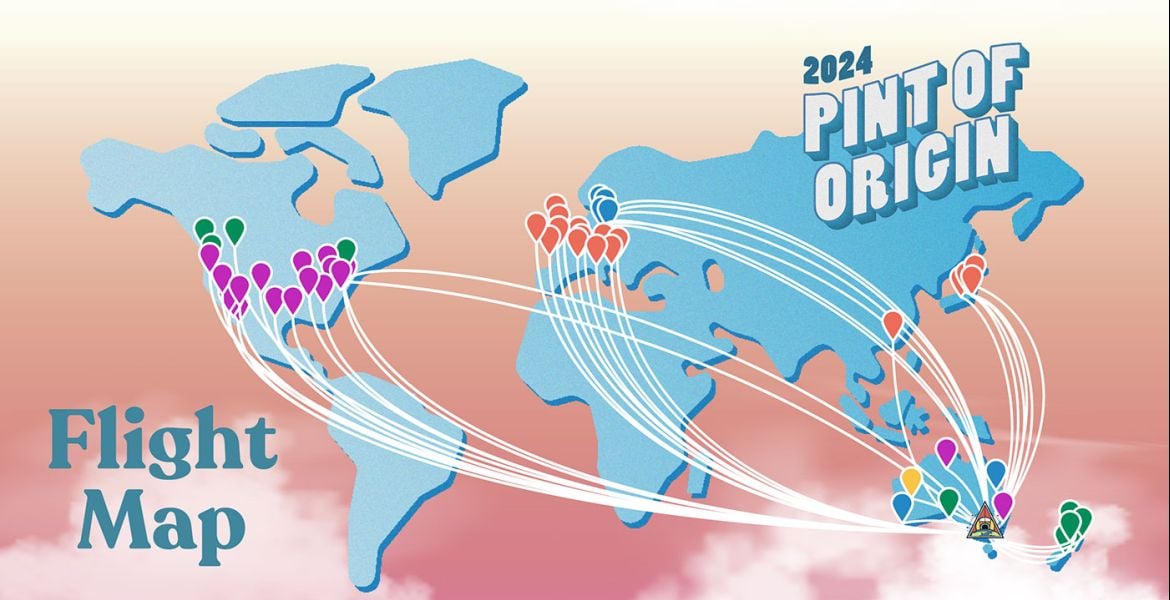We've written plenty about the latest goings on in the Australian hop industry. But what of the past?
In his first article for The Crafty Pint, Will Ziebell delves into the earliest days of hop growing in Tasmania's Derwent Valley.
Greetings from Bushy Park, the hop capital of Australia. Despite having a population of less than 250 people, Bushy Park is a giant in the beer world. It is home to the largest hop garden in the Southern Hemisphere, which this year completed its 151st consecutive harvest.
It even has its own hop museum. OK, so "museum" might be a stretch, since really it's a small room in the corner of the town hall with the same VHS on loop. It’s more than likely just a front for the local community group, hoping to make a small fortune by selling their baked goods to hungry tourists, yet the very fact that it exists is a reminder that the hop industry has played a central role in this part of the world for the majority of Australia’s existence since settlement.
The rich history of hops in the region reveals a story that features striking similarities to the more recent craft beer movement in Australia. It’s a tale of people devoted to their craft, who believed there was something pretty special about their little corner of the world.
The False Dawn
Tasmania’s hop story is believed to begin with William Shoobridge, a free settler who arrived in Van Diemen’s Land (as it was then known) in 1822. His voyage to the new colony was a tough one; he lost his wife and three of his children on the journey over. Yet, when he arrived the colonial powers were quick to help him establish himself.
In those days Van Diemen’s Land was still mostly made up of convicts and the small size of the free settler population meant there was plenty of cheap land and available labour. Shoobridge promptly got hold of a decent parcel of land west of Hobart and was given plenty of convicts to put to work.
Hailing from Kent, one of the key hop growing regions of the UK, Shoobridge brought some hops with him and hoped he could establish gardens similar to those back home. While working the land he was attacked and shot by a bushranger named John Logan but was saved by a piece of metal in his pocket. Thanks to his good luck, he named the area Providence Valley, believing the land would provide good fortune to him and his descendants.
However, despite the optimistic name, the hops never managed to flourish and the area wasn’t suitable for large scale hop production. His yields remained unimpressive and his crops never managed to thrive like those in his native Kent.
Both Shoobridge and others tried a few other areas in Tasmania, but nothing was quite right.
Fine Bines at Last

It was when one of Shoobridge’s sons, Ebenezer Shoobridge, began growing hops in the Derwent Valley that Tasmania became Australia’s home of the world’s most important flower, at least for those of us enamoured with the drink it helps create. In 1852, the younger Shoobridge acquired Valley Field, near New Norfolk, where he found success almost immediately. He eventually moved further up the Derwent River and bought a large estate of land known as Bushy Park.
The entire Derwent region proved to be a fantastic location for hop growing and the plant has been harvested there ever since. Water from the Derwent River, delivered from a number of irrigation schemes, combined with the rich soils to provide ideal conditions for the plant.
Due to Bushy Park’s distance from the equator it also enjoys incredibly long days during summer. At the height of the season, the area can bask in 18 hours of sunlight, which enables rapid hop bine growth. Go much further south and you’ll reach a whole lot of ocean and, eventually, a lot of ice.
From all accounts, Ebenezer Shoobridge was a remarkable figure who became known as the "king of the hop growers". He was a mixture of equal parts protestant work ethic and shrewd capitalism, who believed his employees should be both materially and spiritually looked after.
It was under this mantra that he constructed the Text Kiln (pictured top and below), a traditional oast house used for drying hops so that they could be used year round. It was completed in 1867 and still stands today. The reason it’s called the Text Kiln is because its walls are adorned with passages from the Bible, added in the hope that his workers would always feel inspired when working in the fields.
Although biblical passages on the side of a wall may seem largely unhelpful to overworked farmers, he also assisted those under his employ in some very meaningful ways. In 1892, there were about 25 families who worked the Bushy Park estate. Each was provided with its own home rent free, all coming with their own space for produce so the families could establish a market community between themselves. The Shoobridge family also worked quickly to construct the local school, believing education would be essential in the new century.

Shoobridge was also a long serving member of the Tasmanian Parliament, who tirelessly argued the case for his core constituents – the hop growers. In 1884, as an elected representative, he even travelled to both the USA and the UK in the hope of opening up a trade in hops with those countries. He felt that as the colony no longer needed to import hops from England they could soon become a net exporter. Unfortunately, economic decline in the 1890s and the cost of exportation in those days meant his grand his vision was never met. There was to be no global trade in Tasmanian hops.
Despite this, domestically the industry prospered right into the 20th
Though primarily motivated by the income, it seems there was an aura of goodwill which further encouraged the city folk. The Mercury from that year reports how it was "impossible to visit the fields without becoming conscious of the happy care-free spirit that prevails among those engaged in the work." Even the local school used to close for two weeks to aid in the harvest.
The Pride and The Fall
And so the industry ploughed on; through the war and the boom that followed. Right up until the 1960s, when Australian beer changed forever thanks to a new hop named Pride of Ringwood.
Fourth generation hop farmer Richard Warner knows the story well. Warner’s family still own Valley Field Estate, which they purchased from Ebenezer Shoobridge. They grew hops there on a commercial scale until 1985, making the Warner family among the last of the small scale hop farmers.
“Up until around 1970 the Australian hop industry was self-sufficient,” says Warner. “We supplied the domestic brewers and pretty much that was it, we weren’t exporters.
“CUB released a new hop variety which they had been breeding for some time, in the mid-1960s. That hop variety was called Pride of Ringwood.”
What made this new variety stand out was its high levels of alpha acids. Alpha acids are the chemical compounds which cause the majority of bitterness in beer. When Pride of Ringwood was released it had the highest amount of alpha acids of any hop anywhere in the world; roughly five times the amount of traditional English varieties like East Kent Goldings and Fuggles.
Ashley Huntington, the man behind Two Metre Tall, believes the decline in the hop industry is a part of the wider corporatisation of beer during the 20th century. His farm is also located along the Derwent River, just downstream from Bushy Park.
“All the breweries wanted were alpha,” he says, “and they wanted alpha at the lowest cost.”
Whereas beer was once a broad category, the need to create beers with widespread appeal that could be produced on a mass scale created homogeneity. Under corporatisation, beer became a bland and singular product, when traditionally it had been so complex.
As a result, it was not just the beer made that suffered, but hops too.
“The hop is an aromatic, bitter plant, so it’s going to suffer if there is a demise in the flavour of beer,” says Huntington.
The end result of Pride of Ringwood was clear: by the end of the 1960s breweries needed far fewer hops than they had at the start of the decade. Some attempts were made by the local farmers to export, but they fell flat.
“And that’s when the difficulties really started,” says Warner, “and when the small growers, like my family, and about 150 others went out of business. Between 1973 and 1985, the industry lost around 140 odd growers.”
Those few that remained at Bushy Park were bought up by Elders XL.

In the late 1980s the Barth-Haas Group bought the remaining farms off Elders. This eventually led to the establishment of Hop Products Australia (HPA) – the company that operates Bushy Park today. It wasn’t long before they began to experiment and new hop varieties were bred. It was this pivotal moment that led to the current position of Tasmanian hops, along with those grown by HPA in the Victorian High Country, on the world stage.
As craft beer boomed in the US and eventually took hold here, brewers were after hops that weren’t just about bittering. They were after new aromas and flavours from different types of hops, and HPA had just the right product to fit the bill. Brewers have long been taking notice, both internationally and domestically.
Ashley Huntington is one of them.
“They [HPA] are doing a brilliant job because they are creative,” he argues. “They are actually investing in R&D and creating new varieties, which I just think is fucking brilliant.”
Once again, there is a belief that Tasmanian hops are ripe for export. Yet this time it isn’t just down to the optimism of Ebenezer Shoobridge, who was certain that those grown in his estate would be sought across the world.
More than 100 years on, you can’t help but feel that the king of the hop growers could have been on to something. In 1872, he told his farmers that they had nothing to fear as "gold is in our fields and the market is at our door."
Perhaps the same can be said of today.
Look out for a forthcoming article on a fourth generation hop growing family in Victoria, which has been reinventing itself in recent years to meet the market's changing demands.



